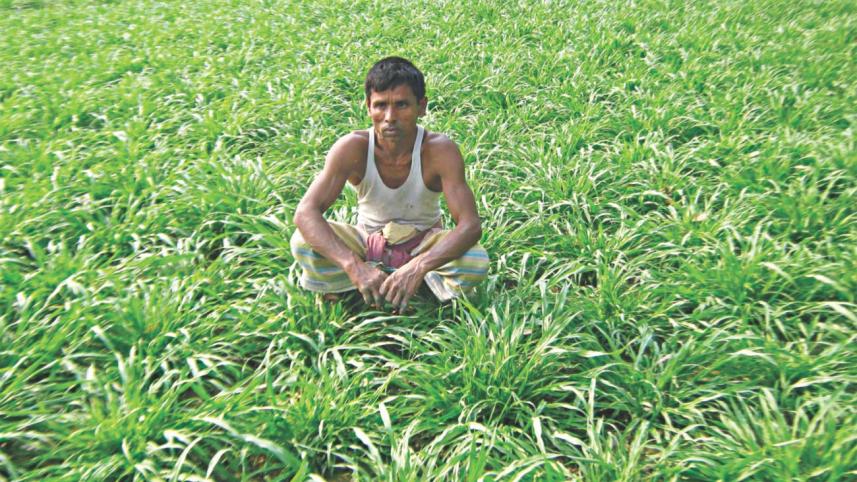Napier grass changes Ruhul's life

Only six to seven years ago, 45-year-old Ruhul Amin, then a rickshaw van puller, had to struggle a lot to maintain his four-member family with his limited income.
But in November, 2011, he started cultivating Napier grass, used as fodder for livestock animals, on his five decimals of land so that he could overcome his poverty.
In the next few years, he took lease of land from others and gradually extended his farm. Ruhul, a resident of Samsabad village in Joypurhat's Panchbibi upazila, is now producing fodder grass on four acres of land.
With his income, Ruhul has built a brick house for his family and also set up a dairy farm at his homestead. Most of all, his children go to school now.
“I collect the grass from the field every day and sell those going door to door of customers,” Ruhul said, adding that he also produces milk in his little farm.
“Almighty Allah has helped me to overcome my poverty,” a successful Ruhul said.
Earlier, with his regular income of around Tk 300, he was overburdened with loans, taken from different NGO's, but everything has changed now, he added.
Ruhul's success story inspired many unemployed youths like Ferdous Mia, Abdul Hakim, Zinnat Ali and Shafiqul Alam of the village, who started Napier grass farming to generate income.
According to Department of Agriculture Extension (DAE) officials in Joypurhat, fodder grass is cultivated on 100 acres of land in Sadar upazila, 20 acres in Akkelpur upazila, 20 acres in Kalai upazila, 80 acres in Panchbibi upazila and five acres in Khetlal upazila.
Sudhendra Nath Roy, Deputy Director of DAE in Joypurhat, said the high yielding Napier grass has become popular among the cattle farmers across the country due to its nutritious value.
Besides, the plant, which grows fast, can be grown throughout the year, the DAE official said.
District Livestock Officer Dr Mamunur Rashid said the demand for Napier grass is on the rise as it has a high nutrition value as cattle fodder.
 For all latest news, follow The Daily Star's Google News channel.
For all latest news, follow The Daily Star's Google News channel.